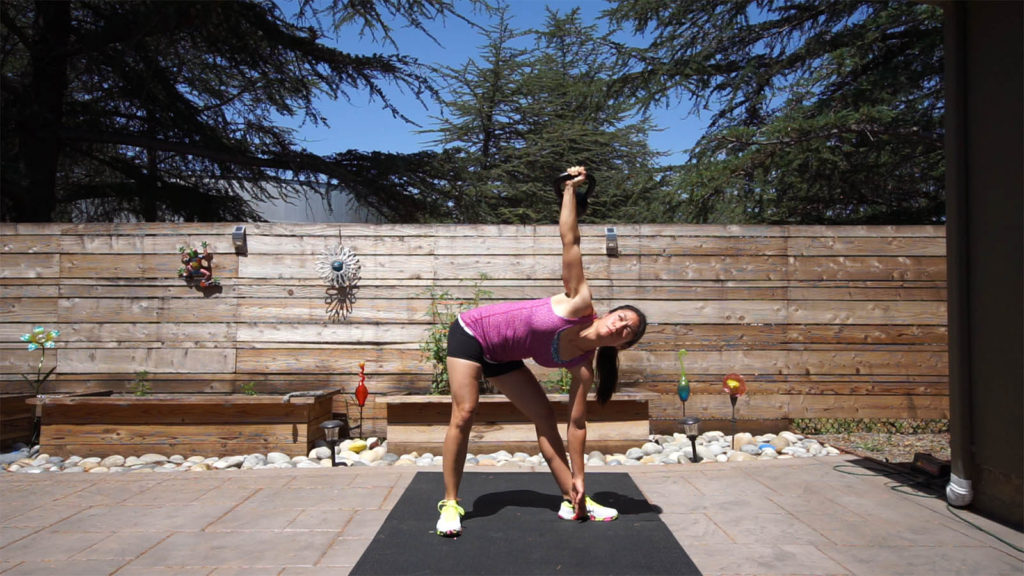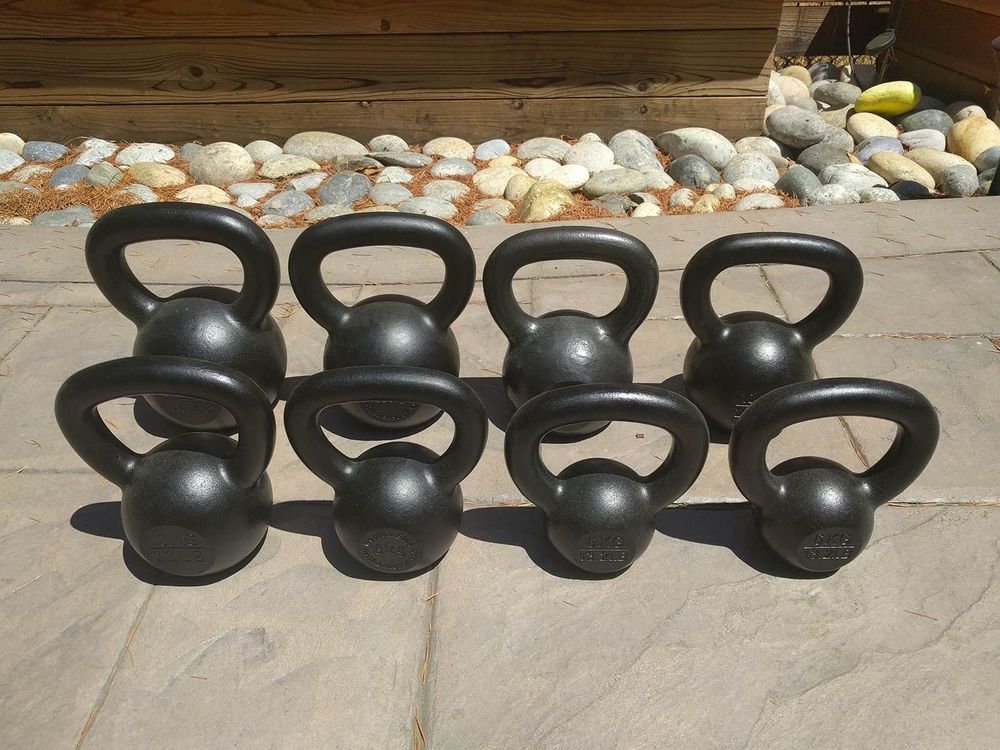What you’ll learn
This series is divided into 3 sections: kettlebells for warm-up, for shoulders, and for legs. There’s how-tos, videos, and benefits of each exercise, so you can pick and choose.
This series was written for 2 main audiences: rock climbers as cross-training, and ACL surgery patients in rehab.

Why Kettlebells for Climbing Cross-Training
Shoulder stability
Unlike barbell training or hanging from a pull-up bar, kettlebells are used mostly single-handed, making them a ballistic weight you need to stabilize using fast-twitch muscles. The shoulder stability required is crucial for rock climbing. There’s very, very few exercises that weight a single arm above your head in all shoulder positions.
Power output
You train max power output in few reps. Take the kettlebell swing: slowing a ballistic object with gravity adds weight, making a 20kg/44lb kettlebell weigh upwards of 100lb. The snatch (taking the bell from the ground to above your head) is a pulling motion, like climbing.
Falling (bouldering)
Kettlebells are used routinely in other sports like volleyball to improve vertical jump–and by that same measure, they improve falling. They train the posterior chain to absorb impact (like slowing the kettlebell at the bottom of the swing and reversing it).
Non-impact
The ironic thing is that kettlebells are a non-impact exercise, yet train you for impact. They’re perfect for those needing rehab (e.g. ACL surgery) without actual impact to get back-to-sport.
Eccentric motion builds tendons
Eccentric exercises are lengthening a muscle under load, like campusing downward, or the down portion of a squat and deadlift. The eccentric motion promotes healing of tendons and ligaments by inducing collagen synthesis, which you’ll desperately need for many types of injury rehab.
Highlight momentary lapses of muscle tension
Exercises like the Turkish Getup require you to shift strength between major muscle groups while stabilizing a kettlebell above your head. Any brief “glitches” in bracing yourself through your trunk, core, and shoulders will cause the kettlebell to veer off its center of gravity, and you’ll immediately know it. These lapses of tension are crucial for rock climbing: if you lose tension momentarily, and then reach for another hold, shock loading your body, it’s asking for injuries like shoulder tears.
Online Resources
- StrongFirst blog. Great articles on both barbell and kettlebell form.
- RKC blog (Russian Kettlebell Association)
Books & Gear
Your own kettlebell set
There’s a ton of kettlebell brands out there and I own a set of KettlebellsUSA (I’m not in any way affiliated with them, I just did a ton of research and tried a bunch myself). My set from 8kg-20kg was under $500. Look for:
– Single die cast. Cheaper bells often have an uncomfortable seam in the handlebar where the 2 halves of the bell meet.
– Rust-resistant coat
– Have all weights in 2kg increments. Some brands skip a weight in every trio according to the old-school Russian system. That’s nearly a 10lb difference between sets.
– Not vinyl coated. Your arm hairs will hate you.

→ Explore more articles in Climbing, Fitness, ACL


